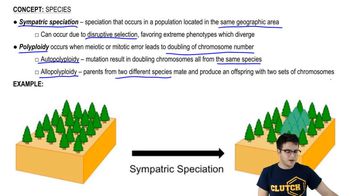How do the phospholipids in archaea differ from those in other cells? a. They have tails made of unsaturated fatty acids instead of saturated fatty acids. b. They do not contain hydrocarbon chains. c. They have isoprenoid tails instead of fatty acid tails. d. They have two hydrocarbon chains instead of three hydrocarbon chains.
What is a fiber composite? How do cellular fiber composites resemble reinforced concrete?
 Verified step by step guidance
Verified step by step guidance
Verified video answer for a similar problem:
Key Concepts
Fiber Composite

Cellular Structure

Reinforced Concrete

A cell is placed in a solution that is hypotonic to the cell. Which of the following best describes movement of water in this situation? a. Water will only flow into the cell. b. Water will only flow out of the cell. c. Water will flow into and out of the cell, but the overall net movement will be out of the cell. d. Water will flow into and out of the cell, but the overall net movement will be into the cell.
If a solution surrounding a cell is hypertonic relative to the inside of the cell, how will water move? a. It will move into the cell via osmosis. b. It will move out of the cell via osmosis. c. It will not move, because equilibrium exists. d. It will evaporate from the cell surface more rapidly.
Where are protein components of the extracellular matrix synthesized? a. in the rough ER b. in the Golgi apparatus c. in the plasma membrane d. in the extracellular layer itself
